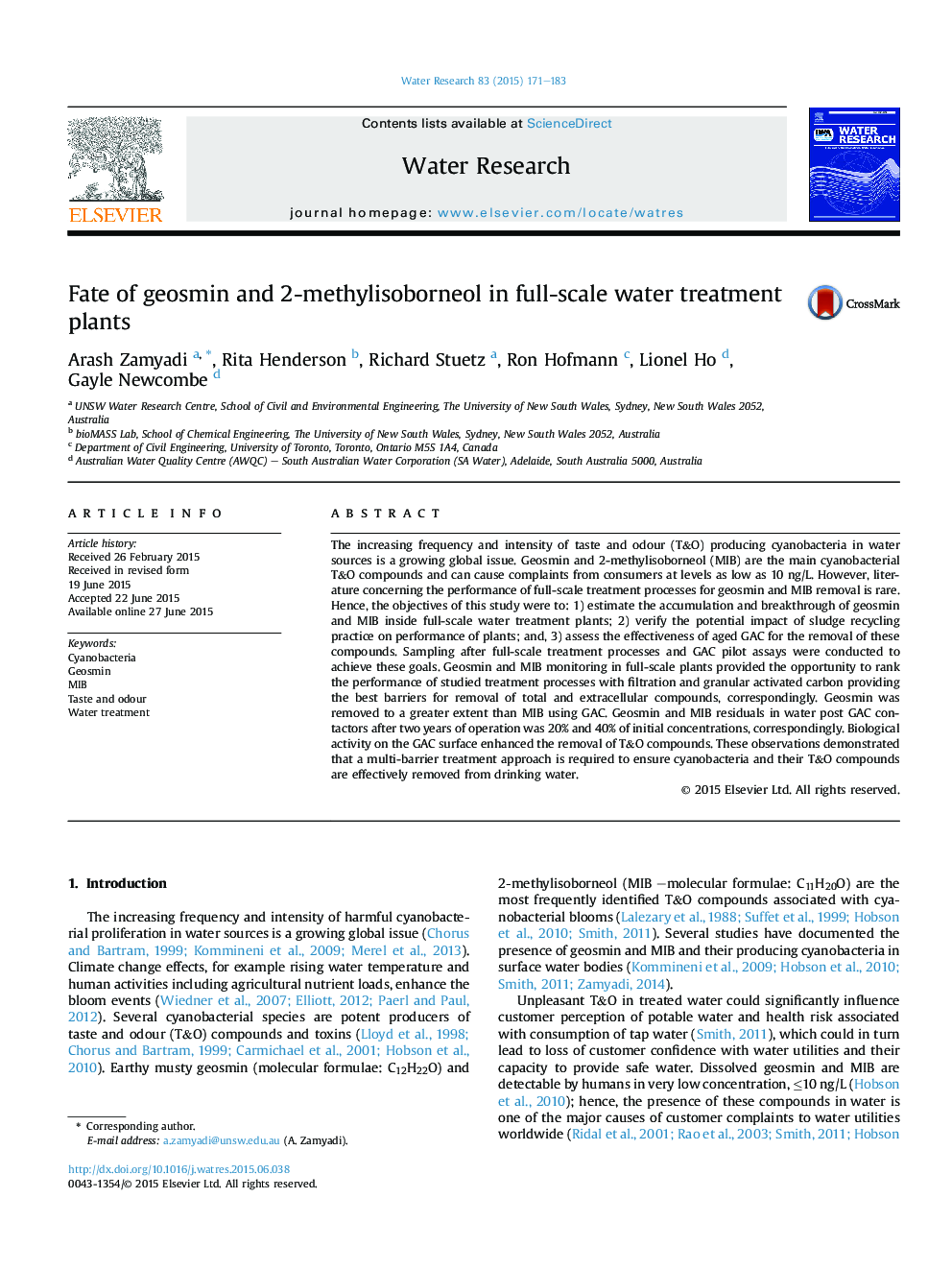| کد مقاله | کد نشریه | سال انتشار | مقاله انگلیسی | نسخه تمام متن |
|---|---|---|---|---|
| 6365755 | 1623085 | 2015 | 13 صفحه PDF | دانلود رایگان |
- T&O monitoring in full-scale treatment plants: geosmin and MIB.
- Important site of cell growth and T&O production: sludge handling basin.
- Sludge supernatant reuse: major contributor to T&O issues during treatment.
- Dissolved T&O removal: GAC > PAC â filtration > sedimentation > chlorination.
- Reduction in aged-GAC removal capacity: 20% for geosmin and 40% for MIB.
The increasing frequency and intensity of taste and odour (T&O) producing cyanobacteria in water sources is a growing global issue. Geosmin and 2-methylisoborneol (MIB) are the main cyanobacterial T&O compounds and can cause complaints from consumers at levels as low as 10Â ng/L. However, literature concerning the performance of full-scale treatment processes for geosmin and MIB removal is rare. Hence, the objectives of this study were to: 1) estimate the accumulation and breakthrough of geosmin and MIB inside full-scale water treatment plants; 2) verify the potential impact of sludge recycling practice on performance of plants; and, 3) assess the effectiveness of aged GAC for the removal of these compounds. Sampling after full-scale treatment processes and GAC pilot assays were conducted to achieve these goals. Geosmin and MIB monitoring in full-scale plants provided the opportunity to rank the performance of studied treatment processes with filtration and granular activated carbon providing the best barriers for removal of total and extracellular compounds, correspondingly. Geosmin was removed to a greater extent than MIB using GAC. Geosmin and MIB residuals in water post GAC contactors after two years of operation was 20% and 40% of initial concentrations, correspondingly. Biological activity on the GAC surface enhanced the removal of T&O compounds. These observations demonstrated that a multi-barrier treatment approach is required to ensure cyanobacteria and their T&O compounds are effectively removed from drinking water.
253
Journal: Water Research - Volume 83, 15 October 2015, Pages 171-183
